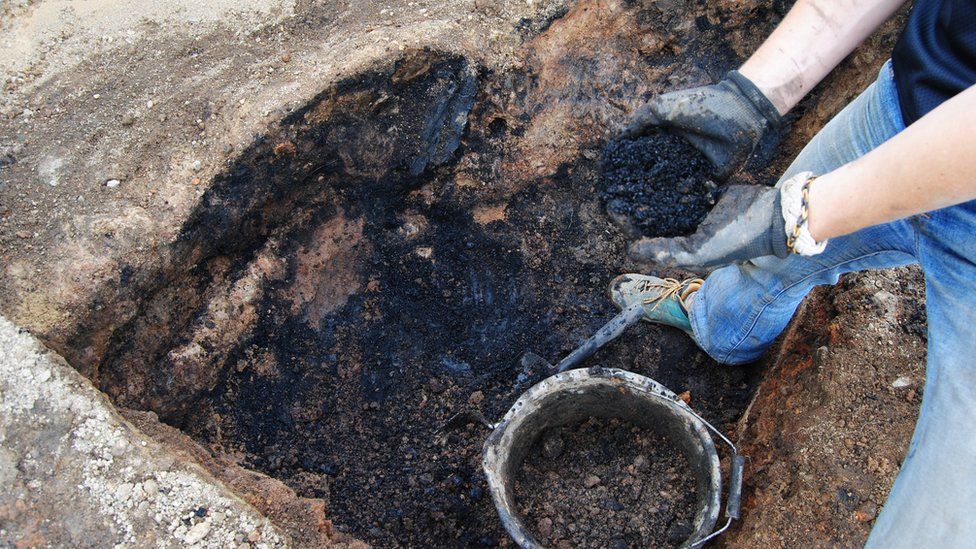Archaeological finds on route of Inverness West Link
- Published

Prehistoric and Bronze Age finds have been made during work to construct the new Inverness West Link road.
Pottery fragments and the remains of kilns used for drying grain were among discoveries made at Torvean.
Archaeologists who have been monitoring the building of the West Link displayed some of the items at Lochardil Primary School last week.
The new road is being built for Highland Council to ease traffic flow through Inverness.
The finds include Bronze Age burnt mounds.
The mounds are large piles of burnt waste, often including ashy deposits and stones that have been shattered by heat.
They are usually horseshoe-shaped and found close to streams, and archaeologists say that they are the product of repeated events of burning.
The mounds are connected to the heating up of stones which were then placed in water-filled pits to heat water, possibly for use in cooking, washing wool or even as small saunas.
- Published14 September 2016